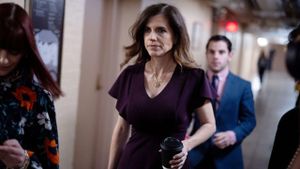New Delhi– NASA is on the verge of making a pivotal decision this Saturday about how to safely return astronauts Sunita Williams and Butch Wilmore from their prolonged mission aboard the International Space Station (ISS). The astronauts have far exceeded their intended eight-day stay and have now been living in space for over two months. This unprecedented extension raises significant questions about the viability of their current ride home: the Boeing Starliner spacecraft.
This decision could change everything. NASA’s choice will become public following what officials call a comprehensive agency-level review. This process is set to conclude no earlier than August 24, and both astronauts are anxiously awaiting news of whether they’ll return on Starliner or aboard SpaceX’s Dragon capsule.
Though initially heralded as the future of space transport, Starliner has encountered several technical challenges. Notably, it faced issues with multiple thrusters and helium leaks during its approach to the orbiting lab. While engineers managed to get four of the five faulty thrusters back online—Starliner is equipped with 28 thrusters—these problems have left many uneasy about the spacecraft's overall safety and its ability to successfully execute the deorbit maneuver.
Boeing has put significant resources—over $1.5 billion—into the development of the Starliner program, but not every aspect of the venture has unfolded smoothly. NASA officials have voiced concerns about the spacecraft’s preparedness for crewed missions. If the agency finds Starliner unfit for astronaut travel, it will be undocked from the ISS without crew members aboard, which would severely hamper Boeing's aspirations for manned spaceflight.
The prolonged mission was initially supposed to facilitate the deployment of supplies to the ISS, yet the unexpected difficulties have turned it more precarious. Meanwhile, NASA has indicated they may switch the astronauts' return to SpaceX’s Dragon capsule, expecting to have them back on Earth by February 2025. This would come after major delays, including the postponement of the SpaceX Crew-9 mission to the ISS, now slated for September 24.
Despite these setbacks, both Boeing and SpaceX were contracted back in 2014 under NASA’s Commercial Crew Program to facilitate manned journeys to and from the ISS. SpaceX has already proved its mettle, successfully launching approximately 12 crewed missions with its Dragon capsules, becoming something of the gold standard for modern space travel.
Over the years, NASA has paid Boeing roughly $4.2 billion, highlighting the immense taxpayer investment expected from the aerospace giant. The stakes are high as each company enters this intense race to not only salvage their reputations but to establish the next era of commercial space travel.
The world is holding its breath. Will NASA back Boeing's beleaguered Starliner, or will they play it safe with SpaceX’s proven Dragon design? Either way, the outcome will undoubtedly set the tone for NASA’s future partnerships and its ambitious goals for human exploration beyond low Earth orbit.
Sunita Williams, having already made history multiple times as one of the most accomplished female astronauts, faces yet another defining moment. With her future ride home still uncertain, she and her crew continue to conduct scientific research aboard the ISS, underlining their professionalism even amid this suspenseful wait.



